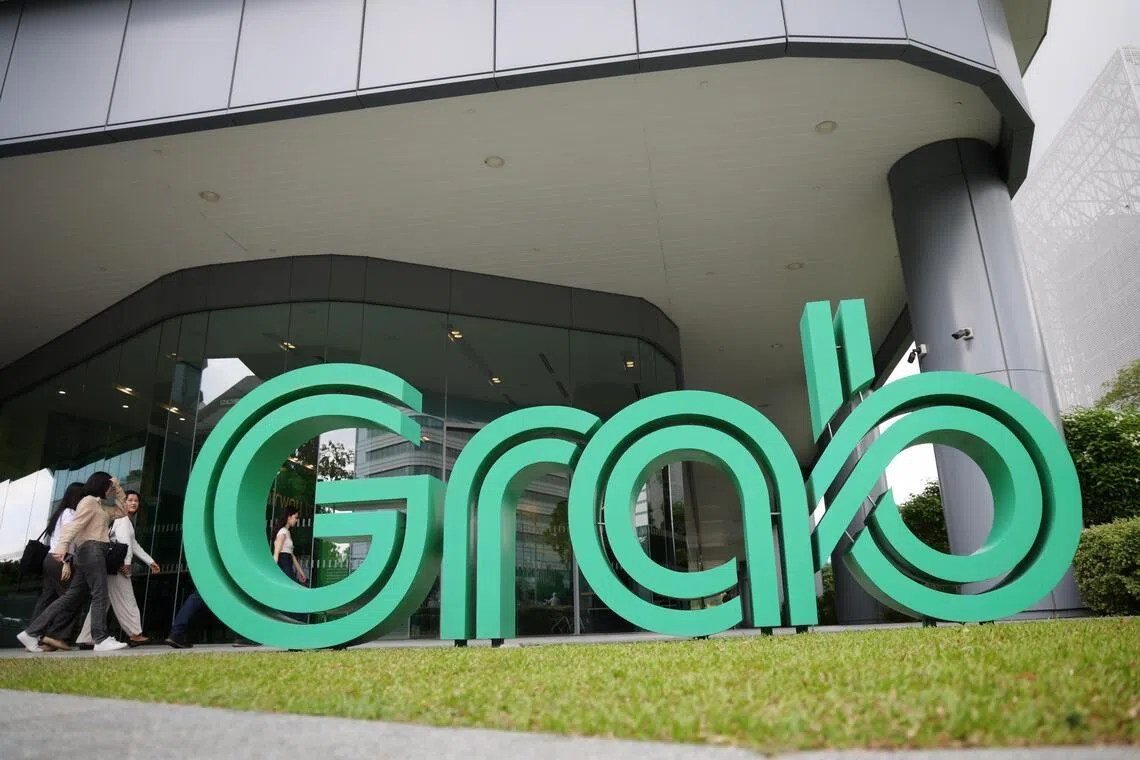Grab raises full-year earnings forecast to as much as $652m after money-saving products fuel demand
Sign up now: Get ST's newsletters delivered to your inbox

New products like shared rides and group food orders are helping Grab fend off competition in South-east Asia.
PHOTO: ST FILE
Follow topic:
SINGAPORE - Grab Holdings raised its earnings forecast for the year after quarterly profit topped estimates, helped by novel offerings such as shared rides and deliveries that drew consumers during an economic downturn.
The Singapore-based company predicted US$490 million to US$500 million (S$652 million) in adjusted full-year earnings before interest, taxes, depreciation and amortisation (Ebitda), more than its earlier forecast of as much as US$480 million. Grab also narrowed its full-year sales forecast range, keeping the higher end unchanged at US$3.4 billion.
New products such as shared rides and group food orders are helping Grab fend off competition from Indonesia’s GoTo Group and smaller contenders throughout the South-east Asian region of about 675 million people.
Chief financial officer Peter Oey told Reuters that in the deliveries segment, about a third of new monthly transacting users come from the affordable channels, and about 40 per cent of them are upselling into more standard products.
“What we’re seeing is more engagement from these saver platforms or these affordable products, and also they’re spending more (frequently) at the same time as we are able to upsell them,” Mr Oey said.
Grab’s revenue rose 22 per cent to US$873 million for the three months through September. Analysts were projecting US$869 million on average, according to Bloomberg-compiled estimates. Adjusted Ebitda also beat estimates at US$136 million.
While Grab and GoTo are both growing at a double-digit percentage clip, their margins have remained slim. The two industry leaders have been exploring a combination to alleviate cost and pricing pressures, with new entrants luring away users with promotions.
Shares of Grab remain far below their initial price when it went public through a US blank-cheque firm in 2021. Still, they have gained more than 40 per cent in the past 12 months as its profit increased, outperforming GoTo.
Grab has seen growth slow dramatically from triple-digit rates in years past as it moves away from a frenetic expansion pace, focusing on profits after years of spending to grow its market share.
Grab’s increased customer base has left it with less room for growth, leaving it to introduce more novel offerings to entice consumers who are less willing to hail a ride or get food delivered to their door in a challenging economy.
Like its US counterparts Uber and Lyft, Grab is betting on autonomous vehicle (AV) technology to prepare for a future where driverless rides are a norm. In October, it announced an investment in driverless technology developer May Mobility, and in September it formed a pact with Chinese robotaxi operator WeRide to offer AVs for consumers in part of a neighbourhood in Singapore.
It is also betting on new initiatives in areas from digital finance to its core delivery services.
“We want to continue to sustain this growth momentum that we’re sending into Q4, into Q1, Q2, Q3 next year,” Mr Oey said. “If we continue to deliver these product innovations that we’re doing, making our products affordable, we should be seeing a similar sustaining momentum in the growth of our business and that profit conversion.” BLOOMBERG, REUTERS

